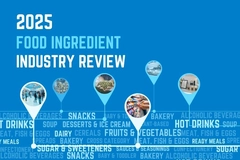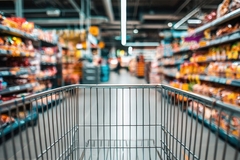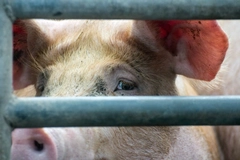
- Industry news
Industry news
- Category news
Category news
- Reports
- Key trends
- Multimedia
- Journal
- Events
- Suppliers
- Home
- Industry news
Industry news
- Category news
Category news
- Reports
- Key trends
- Multimedia
- Events
- Suppliers
UK Food and Drink Federation chief welcomes fall in grocery inflation but warns “challenges remain”

20 Oct 2023 --- Latest figure shows that the UK’s overall inflation rate remained consistent at 6.7%, halting three consecutive monthly declines. Prices for food products such as milk, cheese and eggs decreased, relieving consumers during their grocery shopping.
Karen Betts, chief executive of the Food and Drink Federation, comments, “It’s good to see food and drink inflation fall again, for the sixth consecutive month, to 12.2% in September from 13.6% in August, which provides some relief for households.”
“The UK food and drink annual inflation rate will likely continue to ease for the rest of the year. In September, year on year inflation has been slowing for most food categories,” Betts tells Food Ingredients First:

“The notable exceptions were sugar and olive oil. It’s important to note that while some costs are falling, others keep rising, it typically takes 7-12 months for cost changes to pass through the supply chain.”
Rising costs in supply chain
Betts emphasizes the intrinsic connection between the energy sector and food and drink businesses, mentioning how recent energy costs have decreased logistics costs.
However, some challenges remain. “Costs have been exacerbated by wildfires, heatwaves, and flooding across parts of Europe this summer.” Climate change has affected fresh produce yields, leading to a spike in prices for commodities like sugar and olive oil,” Betts continues.
She also highlights how the new Black Sea corridors used by Ukraine for shipping grain are proving significantly more expensive than when the Black Sea Grain Deal was in place, which risks pushing up grain prices again.
Industry adjustments
To deal with rising costs, manufacturers have streamlined their product ranges, shifted to more energy-efficient processes, changed suppliers, put certain investments on hold, and even borne a portion of the surging costs themselves.
Betts points out that the Office for National Statistics data highlighted that 72% of food and drink manufacturers absorbed some escalating costs over the past year.
 Betts calls for the use of robotics, automation and digital technologies in the F&B sector.The ramifications are not limited to the prices of goods. The sector, where 97% comprises SMEs, is also grappling with labor shortages, driving labor costs upward.
Betts calls for the use of robotics, automation and digital technologies in the F&B sector.The ramifications are not limited to the prices of goods. The sector, where 97% comprises SMEs, is also grappling with labor shortages, driving labor costs upward.
“The government could do more to help by rapidly implementing the recommendations set out in the Independent Review of Labour Shortages in the Food Supply chain,” Betts says.
Calling for reforms
She also emphasizes the importance of targeted financial incentives to promote robotics, automation and digital technologies in the food and drink sector.
She also highlights the need for reforms in the Apprenticeship Levy to better cater to immediate skill requirements: “Only 45% of food and drink levy payers were able to spend over half of their available funds.”
“Apprenticeships are key to upskilling our workforce and there is potential to increase participation further by removing the functional English and maths skills requirement. Removing this requirement will widen participation, particularly for older, experienced workers, and would be better supported by relevant training outside of apprenticeships.”
Betts also suggests the government should consider reducing unnecessary regulatory burdens, including reviewing new and costly ‘not for EU’ labeling plans for food sold in Great Britain.
“We welcome the new arrangements to supply Northern Ireland (the Windsor Framework) that came into effect in October.”
“However, the unilateral decision by the UK government to extend ‘not for EU’ product labeling to Great Britain is unnecessary and cumbersome. It will inadvertently lead to further price increases for consumers by placing unnecessary costs on already stretched businesses,” she concludes.
By Sichong Wang










